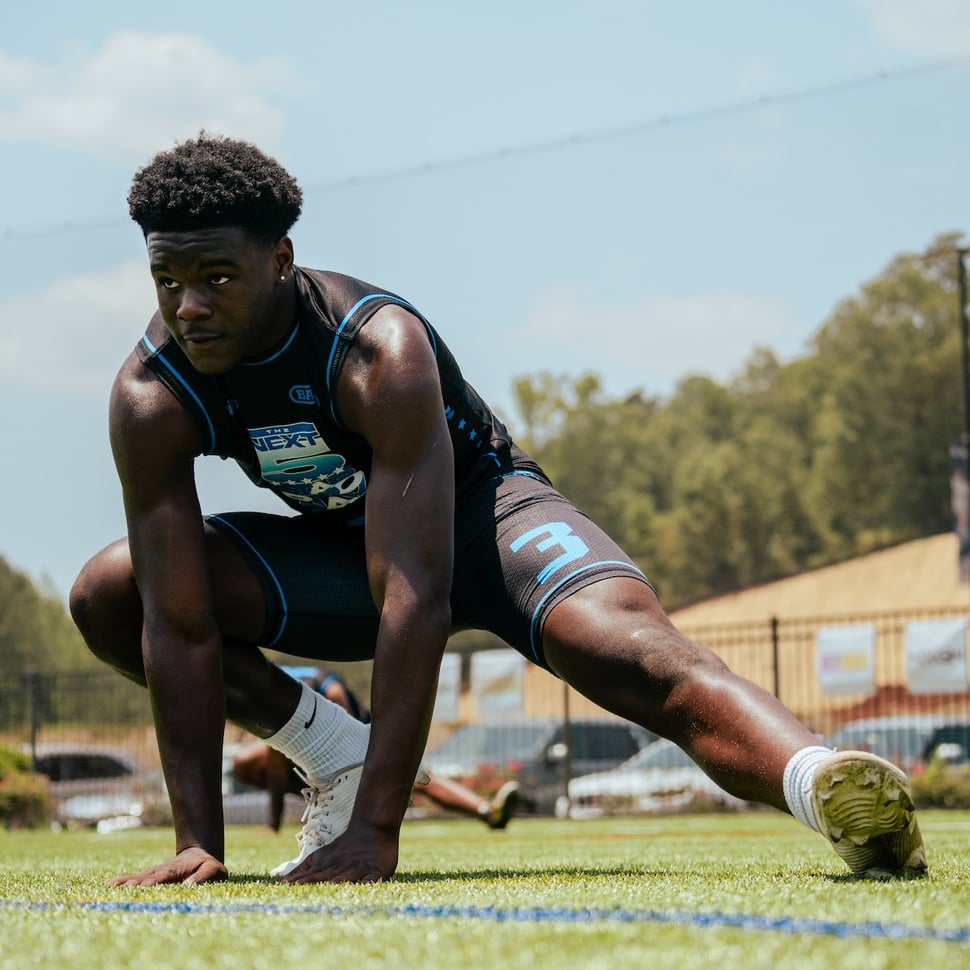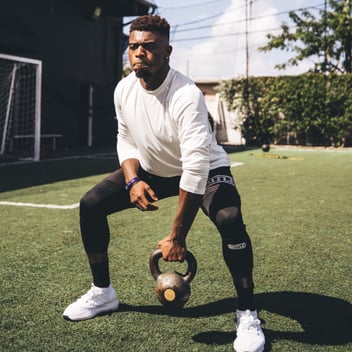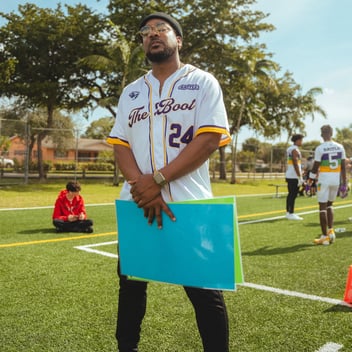5 Off-Season Football Workouts & Conditioning Ideas

Coaches can always tell which players have been slacking off on their workouts during the off-season. Pre-season/off-season football workouts may seem like a chore, but you’ll look back and appreciate the extra work that you put in when it comes time for your coach to evaluate your abilities for the coming season, pick starters, and decide on playing time. Improving your football strength and conditioning in the offseason doesn't require a lot of money, but it does take a strong degree of commitment. Fortunately, if you’re reading this, you’re already in the right frame of mind to attack your off-season football workouts and conditioning regimen. So let’s get after it. Here are 5 off-season football workouts and conditioning ideas that will help you optimize your strength and stamina before the first day of official practice.
1. Daily Stretching To Make Your Football Workouts More Efficient
Nobody "loves" stretching but it should be a vital part of your daily workout routine. Strive for a good 15- to 20-minute stretching session before you start any football workout routine. Stretching will improve your flexibility, which is important on the field, but it also helps teach your muscles how to process oxygen better.
Take a deep breath before doing any stretch. Exhale as you actually do the stretch, and inhale again as you finish the stretch. You'll especially want to stretch and loosen up those muscle groups that are prone to strains or pulls. Wear loose and comfortable workout gear that allows you to maximize stretching.
2. Distance Running to Maximize Football Conditioning
A lot of players resist running longer distances since the maximum they'll have to run on any play (potentially) is 100 yards. But players know that running play after play adds up to long distances. Simply put: running and jogging are what improve your overall endurance and cardiovascular health. When you feel just as fresh in the fourth quarter as you did in the first, you can thank that time that you put in on the tracks, trails, sidewalks, and treadmills.
You'll also be incorporating sprints (below), so you won't be running every day. A good schedule for your longer runs is Monday, Thursday, and Saturday. A standard track is 1/4 mile, so you can determine distances for your runs based on that. Younger kids through middle school should focus on running 1/4- to 1/2-mile on their long running days (1 or 2 laps). High school players and up should strive for 3/4 to 1 mile (3 or 4 laps).
On Mondays and Thursdays, focus on speed and finishing strong. On Saturdays, take it easy and jog, but jog the full distance.
3. Sprinting for Improved Speed and Power
Sprinting shorter distances is an important part of offseason football conditioning because that's how you build speed and power. You'll only be doing sprints a couple of days per week (Tuesdays and Fridays, in the example with the longer runs above). Be sure to do a longer stretching session to warm up before doing sprints, since this is where a lot of guys will pull a hamstring.
Sprints should be 20 to 30 yards apiece and no more than that. Flat surfaces are fine, but if you also have a spot with a slight incline, you can also use that to do uphill and downhill sprints. On your sprinting days, do 5 to 10 sprints on each type of surface you have available.
4. Targeted Weight Lifting to Increase Football Strength
Weightlifting isn't recommended for youth players, but any football player can benefit from body-weight exercises. Push-ups, pull-ups, and crunches are effective for strength training and core strengthening and don't require any weights. Strive for 100 push-ups broken up into four or five sets; 100 crunches broken up into four or five sets; and as many pull-ups as you can do in four sets.
For older players, incorporating weight training in the offseason makes a lot of sense. Strengthening the core muscles (abdominals, hips, and back) is important for balance and overall muscle coordination. Do several sets of power cleans, squats, and bench presses with a spotter on your weightlifting days. Strengthening the legs, arms, and back is important for all positions. Alternate the muscle groups that you’re working on lifting days to allow your body time to recover (e.g., work arms one day, and legs the next).
5. Plyometrics for Improving Football Agility
Plyometrics exercises involve jumping or cutting—both of which are routinely utilized on the football field for many position groups. They're used to improve agility by mimicking some of the ways the body moves on the field. They also train the lower extremities in proper mechanics, which helps to avoid ACL or knee injuries. Examples of plyometric exercises include jumping on or off of a box, hops, squat jumps, and single-foot jumps.
Complete Your Football Conditioning & Workouts in Style with Battle Sports
The best players don't wait for pre-season practice to start before they work on getting into shape. Putting in the time during the offseason is what makes coaches notice players. It’s also what raises your strength and stamina enough so that YOU notice your gains. No matter what type of offseason football workouts you're doing, Battle Sports has the men’s athletic apparel and youth athletic training gear you need to get the work done in style.



